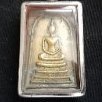Linux Messed Up My Mbr
-
Recently Browsing 0 members
- No registered users viewing this page.
-
Topics
-
-
Popular Contributors
-
-
Latest posts...
-
21
Bt 800,000?
I like having the money in the bank here. I can get about 4% in the US in a fixed deposit, so that’s about a 2 1/2% loss, but I think that’s less than I would have to pay an agent, and it’s easy. I could use it in tbe event of an emergency, and It’s a nice hedge as well. -
26
THAILAND LIVE Thailand Live Tuesday 12 August 2025
Sierra Leone Man Caught Trying to Cross Border Picture courtesy of Daily News. Border patrol soldiers arrested a 46-year-old man from Sierra Leone attempting to cross illegally into Cambodia on foot. The man confessed he had paid nearly 18,000 baht to human traffickers as he wanted to return urgently to his home country following a family bereavement, but was abandoned midway through the journey. Full story:https://aseannow.com/topic/1369466-sierra-leone-man-caught-trying-to-cross-border/ -
0
Crime Sierra Leone Man Caught Trying to Cross Border
Picture courtesy of Daily News. Border patrol soldiers arrested a 46-year-old man from Sierra Leone attempting to cross illegally into Cambodia on foot. The man confessed he had paid nearly 18,000 baht to human traffickers as he wanted to return urgently to his home country following a family bereavement, but was abandoned midway through the journey. At around 23:00 on 10 August, Colonel Chainarong Kasee, commander of the Aranyaprathet task force under the Eastern Military Command, ordered troops from Ranger Company 1206 and the 2nd Infantry Battalion, Royal Guard Regiment to patrol their area after receiving intelligence about suspected illegal border crossings. Officers found the suspect walking along a dark rural road near the agricultural border area of Ban Kud Hin village, Khlong Nam Sai subdistrict, Aranyaprathet district, heading toward Cambodia. He was stopped and detained. The man, later identified as Kamaria Mohamed, had no valid identification documents. Through an interpreter, Kamaria told investigators he first entered Thailand illegally in 2023 and worked selling goods at Pratunam Market in Bangkok. Recently, he received news that a family member had died in Sierra Leone, prompting his urgent desire to return home, via Cambodia. He arranged with an African acquaintance in Cambodia and local guides to help him cross the border unlawfully. Kamaria said he paid an advance of $150 and was to pay an additional $400 upon arrival. However, on the day of crossing, the guides switched vehicles multiple times and abandoned him in a sugarcane field behind Ban Kud Hin, telling him to wait for a pickup that never came. After waiting, he decided to find his own way, but was apprehended by authorities. Following his arrest, Kamaria was handed over to Khlong Nam Sai police for legal proceedings and to clarify his story. Adapted by Asean Now from Daily News 2025-08-12 -
461
2025 SSA Form 7162 - "Hello, are you dead yet?" forms.
I can believe that! Seems to be getting worse by the year. Nothing like years ago but now worse than ever. Lost all respect for all government services. With Mr. T around now God help us all. -
26
THAILAND LIVE Thailand Live Tuesday 12 August 2025
Ruangkrai Asks NACC to Probe PM Over Shares, Land Claims Picture courtesy of Amarin Ruangkrai Leekitwattana, political activist, has filed a petition with the National Anti-Corruption Commission (NACC) seeking an investigation into whether suspended Prime Minister Paetongtarn Shinawatra violated constitutional and ethical standards by serving as a director and shareholder in Thames Valley Khao Yai Hotel Co., Ltd. Full story:https://aseannow.com/topic/1369465-ruangkrai-asks-nacc-to-probe-pm-over-shares-land-claims/ -
461
2025 SSA Form 7162 - "Hello, are you dead yet?" forms.
Not sure what country seems more lost and in a complete daze Thailand or America. But I agree thought a few times might have to visit the office in the states just to get their attention. Total space cases as of late.
-
-
Popular in The Pub







Recommended Posts
Create an account or sign in to comment
You need to be a member in order to leave a comment
Create an account
Sign up for a new account in our community. It's easy!
Register a new accountSign in
Already have an account? Sign in here.
Sign In Now